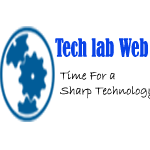One of the reasons why if you do a Google search for web design Dallas you find top results is due to the way that the designer built the website. If you imagine how many web design firms in that area are in competition for those keywords yet only 10 organic results show up on the first page it isn’t difficult to notice who has skills.
There is a lot more to web design than placing a bunch of pretty pictures together and making things look good. The entire planning, structure, content placement, and element of design come together into one outcome that has the capacity to reach people all around the world. The biggest element for success is strategy. Let’s explain.
Table of Contents
Planning Out a Successful Website
There are opportunities everywhere to improve search engine visibility, and many of them come around before the site is even built. From the name of the business to the URL of the website and the very type of hosting platform that the site will be housed on every step of the way can bring promise to search engine domination.
If the business name and the URL of the site contain the pillar keywords that the website will want to rank for there is an extra element of advantage before the site is even started. Finding a hosting solution that is able to handle large amounts of traffic and speed up page load times is even better yet.
For a great advantage for search results:
- Research optimal keywords for the business
- Use keywords in the business name
- Use keywords in the domain name
Keyword research will uncover some of the best keywords that you could possibly use for the utmost success of the site. Using those keywords in every way imaginable is a crucial element of an effective SEO strategy.
What is Strategic Web Design?
The difference between strategic web design and common web design is that the developer will have a strategic plan behind every step in the process of design so that the potential for high-ranking search results and maximum conversion rates is beyond the standard everyday potential of basic web design. Some of the strategies that the developer will incorporate are:
- Keyword placement
- Landing pages for pillar keywords
- Announcements and headings with keywords
- Call to action placement
The beginning strategy of a website starts with off-page elements and then gradually moves toward landing pages and keyword-optimized content.
Building a website for looks and information is much different than building one for success and search engine visibility. In order for a website to rank in the search engines, it has to be built right and must have the pillar keywords established before the first piece of code is typed into the developer’s document.
How Search Engine Optimization Works
Search engine optimization is not a simple explanation that can be doted out in a couple of paragraphs, but the general idea is that the person who develops the site has an idea of what keywords people will use when they go to the search engines to find what they are looking for.
The two major components of search engine optimization are:
- On-page SEO
- Off-page SEO
Although both are similar in the way that they can help web pages rank higher, they are completely different from each other.
Where on-page SEO provides website pages that are properly structured and optimized for the search engines, off-page SEO adds to the element of importance by linking up to other websites that have respectable domain authority.
In essence, the search engine realm is merely a garden where you can plant seeds that grow into lush green plants, or die very quickly from the heat. The website itself is the root of the garden plants, the soil, the water, the sunshine, and everything else are all off-page elements.

It is not difficult to see how important backlinks to your website are as opposed to mere on-page SEO where you are only relying on keywords and pages.
Search engines will seek out information that matches the users’ query and try to provide results that are not only available but are credible and useful. When a person puts keywords into the search bar and hits enter, the search engine will scour trillions of possible results within seconds. The results that the search engines determine are most useful are pulled from sources and presented to the user in a neat package of a list of sites that could potentially solve the problem the user is challenged with.
The key to search engine visibility is to have a website that provides quality, accurate information that is backed up by other sites that provide quality information. The way to go about establishing these types of connections is strategy.
Strategies for Conversion Rate Optimization
Conversion rate optimization is key for any website that wants to get the most out of every visitor that lands on the pages. The conversion rate is the percentage of people that visit the site that converts from browsers to paying customers. Obviously, the higher the conversion rates, the higher the success of the website.
Some of the main elements that are conducive to higher conversion rates are:
- User experience
- Clarity of images
- Clarity of headings
- Placement of CTAs
When a website has a clear message of what it has to offer to its guests and provides an easy way to get from one end to the next it makes it much easier for visitors to understand the content and where to go to buy stuff or to place an order.
It’s alomost too simple. Strategize to make the website as comfortable and simple for users as possible. When the website is easy to navigate, the information is right in front of the people and the ways to make things happen are right in front of their faces they have no choice but to stick around and make an order.
Web Design without Strategy
There are plenty of establishments out there that do not need a strategic approach to their web design. Most of these sites are merely for informational purposes. It is pretty easy to create a website that does not have to be built for optimal search results. However, a website without a strategy is not very effective.
Just imagine a website with one page of a block of information that has no styles, no paragraph breaks, no bullet points, or numbered lists.
Each and every website should have at least a little bit of strategy behind it so that when the users visit it they have a pleasant experience. Some of the elements that make websites easier to read and digest are:
- Headings
- Paragraph breaks
- Numbered lists
- Bulleted lists
A website without a strategy can be a bland, uninteresting burden for a person to have to endure. Besides never having a decent chance to show up in the search engines, it will be an eyesore to its visitors that will most likely leave before they read through one or two sentences.
Conclusion
It pays to have a website that is planned out and created on a structure of success as opposed to slapping the whole thing together and hoping for the best. Most of the time that a person invests time in development strategies saves more time in the end because all they have to do is sit back and let the money roll in.





_3-6.jpg)




